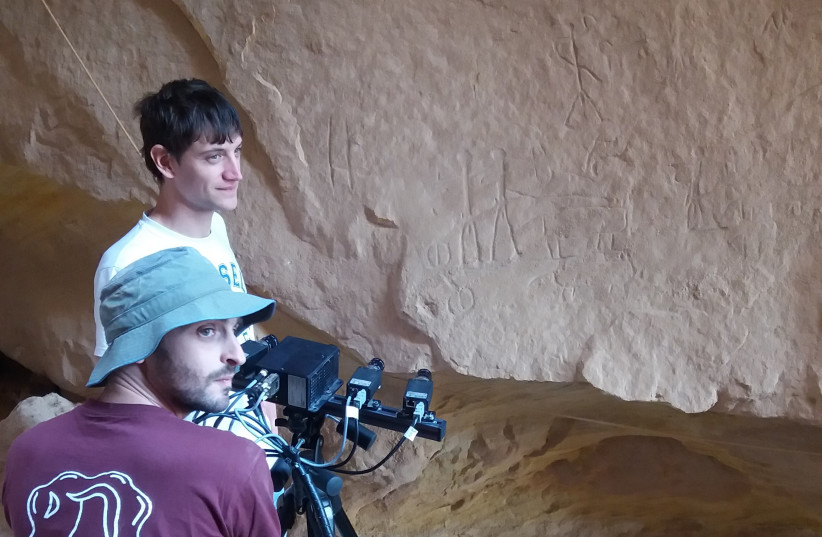New insights into ancient rock engravings and the techniques used by ancient engravers have been realized by a Hebrew University (HU) team that included a computational archaeologist, artist and computer programmer at Site 25 in Timna Park, 18 kilometers north of Eilat in the Arava.
The study that the team called “groundbreaking” has captivated experts and offers a fresh perspective on the production processes of these fascinating engraved rocks. It has just been published in Nature’s Humanities and Social Sciences Communications journal under the title: “Recognizing technique variation in rock engravings: ArchCUT3-D for micromorphological analysis.”
Traditionally, the study of engraved images focused on iconography, iconology, and stylistic features and did not pay attention to the intricacies of the engraving techniques. But the innovative research method that they introduced in the study emphasizes characterizing the techniques employed in creating rock engravings during ancient times.
By considering technological variations as indicators of the engraver’s production process, the team members aimed at enhancing our understanding of these ancient artworks.
Engraving techniques usually don't get enough attention
To conduct the study, 3-D scans of two ancient engravings and contemporary graffiti were obtained from the site. These scans underwent meticulous analysis using ArchCUT3-D, which is specialized software developed to assess the 3-D micromorphological characteristics of the incisions forming the engravings. ArchCUT3-D enables precise and repeatable analysis by extracting 3-D slices of the incisions and examining the surface micromorphology.

The results of the research indicate that different incisions within the engravings were executed using distinct techniques. By identifying distinctive characteristics, the team successfully showcased the unique aspects of the engraving operations, such as ergonomic conditions and the consistency level of the engraving gestures.
They said that the use of ArchCUT3-D software in this study is a significant computational advancement in the field because it enables the recognition of incision techniques through micromorphology specifications and facilitates the reconstruction of engraving gestures and individual production procedures. The technology opens up exciting possibilities for understanding the craftsmanship and cultural significance behind ancient rock engravings.

Prof. Leore Grosman, head of HU’s Computational Archaeology Laboratory, was enthusiastic about the study’s findings, stating that “our research provides a fresh perspective on ancient rock engravings by delving into the intricacies of their production processes. By unlocking the technological secrets behind these engravings, we gain valuable insights into the craftsmanship, artistic expression, and cultural context of our ancestors.”
The implications of this study reach beyond the scientific community, as the newfound knowledge about ancient engraving techniques has the potential to reshape our understanding of human cultures throughout history, they said. They hope their findings will stimulate further research and inspire interdisciplinary collaborations to unravel the mysteries surrounding these ancient artworks.
In addition to Grosman, the research team included HU doctoral student Lena Dubinsky and Dr. Marcelo David, an expert in soft condensed matter physics and biophysics.
